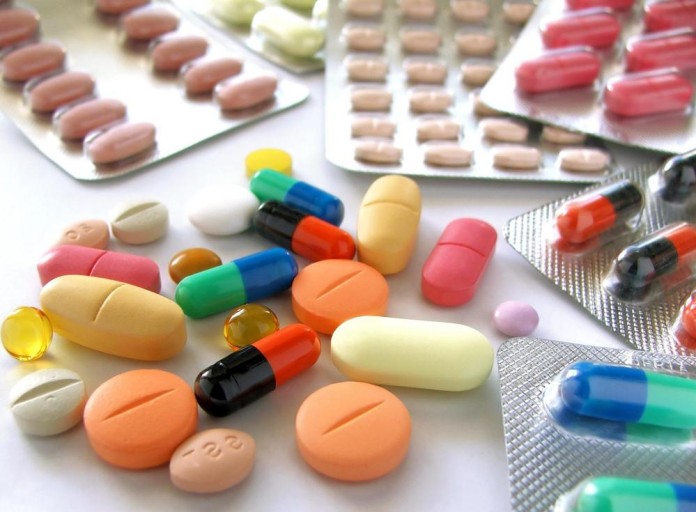Ask any pharmacist, and they will tell you that apart from painkillers, the next drugs that people buy over the counter are antibiotics.
This is because many of us don’t regard antibiotics as specialised medications that must be used under a physician’s guidance.
In their self-medication spree, some people assume that if you have boil, antibiotics must come to the rescue. Ditto if you have self-diagnosed typhoid fever, runny stomach, open wound… Name the illness and many people are ready to give you prescriptions, even though they are neither doctors nor pharmacists!
Yet, authorities are warning that the human race risks developing antibiotic resistance simply because we are bingeing on a drug that, otherwise, should be used sparingly, in complete dosage when the need arises and under a physician’s directive.
This past week, the World Health Organisation sounded the alarm that antimicrobial resistance has become a source of global concern and that in order to draw global attention to it, the first World Antibiotic Awareness Week will be held from today, November 16-22.
The global health body says the campaign aims to increase awareness of global antibiotic resistance and to encourage best practices among the general public, health workers and policy makers to avoid the further emergence and spread of antibiotic resistance.
How antibiotics work
The Academy of Managed Care Pharmacy says normally, antibiotics kill bacterium by causing its cell wall to disintegrate.
AMCP explains, “Antibiotics are chemicals that kill or inhibit the growth of bacteria and are used to treat bacterial infections. They are effective in the treatment of bacterial infections, preventing the spread of disease and minimising serious complications of diseases.
“They can prevent the bacterial cells from multiplying, so that the bacterial population remains the same, allowing your defence mechanism to fight the infection or literally kill the bacteria by stopping the mechanism responsible for building their cell walls.”
A General Practitioner, Dr. Biodun Oluwa, says, when an individual develops antimicrobial resistance, a particular antibiotic drug will not work when used for what it, ordinarily, would have treated.
Antibiotic overkill
Many of us are happy that we don’t abuse medications, antibiotics inclusive. But, would you know that we ingest antibiotics in many ways, even when we are not taking them as drugs?
Veterinary doctors confess that antibiotics are used in animal husbandry. And, although there are safety measures that guide such operations, regular consumption of meats of such animals can lead to high antibiotic exposure and, consequently lead to antimicrobial resistance eventually.
Here’s how it works. A veterinarian, Dr. Oladele Yusuff, says when an animal is treated with a certain antibiotic over time, the bacteria living in that animal will become resistant to that drug.
“If a human being eats the resistant bacteria through improperly cooked meat and becomes ill, he or she may not respond to antibiotic treatment,” Yusuff explains.
What this translates into is that foods such as meat, eggs, fish, and dairy products may not be free of antibiotics if you buy your foods from large-chain supermarkets instead of the local market.
In other words, your ‘agric’ chicken, farmed fish such as catfish, ‘agric’ eggs, etc., may be products of animals that have been given antibiotics at certain point in time.
While you may do well by cooking your meat properly, you may also choose local breeds of animals or birds for your animal protein. Such meats are usually lean and devoid of the fats that are common in farmed animals.
While this is not to raise false alarms, Oluwa says since you probably don’t know the source of your foods, you can reduce your possible antibiotic intake by consulting with your doctor whenever you are ill, instead of resorting to self-medication.
Frivolous antibiotic use and your health
Experts say the discovery of antibiotics as a medication for treating broad spectrum of infections make them life-savers.
However, they warn, the misuse of this class of drugs has increased the number of drug-resistant germs.
Oluwa says there’s a difference between bacterial and viral infections; and that while antibiotics are effective in the treatment of bacterial infections, the same cannot be said about using the medication for viral infections. Many people are ignorant of this!
She counsels, “Some infections that won’t respond to antibiotic treatment include common cold, flu (influenza), bronchitis, most coughs, most sore throats, some ear infections, some sinus infections, and viral gastroenteritis (stomach flu).”
Consequently, physicians say, you will be setting yourself up for possible antimicrobial misuse and eventual resistance if you employ antibiotics to treat any of these infections.
Antibiotic dosage
When it comes to taking antibiotic medications as prescribed, doctors warn that unlike many drugs, antibiotics are usually taken between one and four times a day — depending on the symptoms and the unit of measurement such as the ‘mg’ that accompanies specific drugs.
“Generally, antibiotic doses should, ideally, be equally spaced throughout the day and taken at the same times each day, say, every four hours, for instance. This helps to maintain a constant level of medication in your bloodstream, making your recovery progressive and timely,” Oluwa says.
She counsels that if, for whatever reason, you miss a large dose of your drugs, you should discuss with your physician who will guide you as to how to complete your dosage.
She says even if you feel completely okay before your drugs finish, you should continue until they finish.
“If you don’t finish the course or if you miss several doses, the infection may return,” the physician warns.
The bottom line: As with any drug, antibiotics are not to be used anyhow. See the doctor when you are ill.






